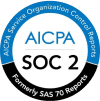Introduction
Recruitment marketing teams, it’s time for a wake-up call – you’re measuring the wrong things.
For years, the industry has been obsessed with metrics like cost per click (CPC) and cost per application (CPA). These numbers might look impressive on a dashboard, but the harsh truth is that they don’t mean much when it comes to hiring outcomes. A high click-through rate doesn’t guarantee you’ll find the right candidate, just like a flood of applications doesn’t ensure you’ll make a hire.
The rise of AI-generated applications has only made things worse, flooding recruiters with generic, poorly matched resumes that inflate CPA metrics while offering little in terms of actual hiring value. And with AI tailoring resumes to job descriptions, the future looks even scarier. Candidates now apply to hundreds of roles at once, overwhelming recruiters with 10x more applications – yet still resulting in just one hire.
Clinging to outdated metrics in a highly aware and fast-paced world is a recipe for inefficiency. CPC and CPA focus on volume over value, leading teams to prioritize quantity at the expense of quality.
It’s time to ditch these ineffective or incomplete benchmarks and embrace a smarter way to measure success – one that actually delivers ROI.
The Vanity Metric Problem – CPC and CPA Are Holding Us Back
How CPC and CPA took over the industry
At first glance, metrics like CPC and CPA seem logical and that is why they’re being used extensively. They emerged as the recruitment industry’s gold standard because they were easy to track and offered immediate visibility into job advertising performance. Employers wanted to know how much they were paying to attract candidates, and these metrics delivered a simple answer. A low CPC or CPA became synonymous with efficiency and success.
However, sometimes the simplicity of these metrics could be their greatest flaw and in this case, indeed it was. CPC focused on driving traffic, while CPA emphasized generating applications – neither cared about the final outcome. Over time, these metrics became benchmarks.
The surface-level wins of CPC and CPA
CPC and CPA celebrate the wrong victories. A click doesn’t necessarily mean a candidate is interested or qualified, and an application doesn’t mean they’re hireable. Yet, recruiters are rewarded for hitting these numbers, creating a cycle where volume is prioritized over value.
Think of a job ad campaign generating 1,000 clicks and 200 applications. On paper, it looks like a success. But what if none of those candidates meet the qualifications? Or worse, what if the hires leave within a quarter? CPC and CPA definitely tell a story, but it’s a shallow one that ignores the most critical factor – quality.
The hidden costs of focusing on the wrong metrics
Relying on CPC and CPA doesn’t just fail to measure success; it actively misguides recruitment strategies. When the focus is solely on generating applications, recruiters are pressured to cast the widest possible net. This approach often leads to:
- Wasted job ad spend: Targeting a broad audience drives up clicks but dilutes the pool of qualified candidates.
- Recruiter burnout: Sifting through hundreds of irrelevant applications is time-consuming and frustrating.
- Poor hires: Candidates who slip through the cracks due to rushed or inefficient screening processes.
- Poor candidate experience: Now this seems confusing. Did you know 70% of the candidates fit for a job end up applying to the wrong job.
The recruiting industry has been stuck in this vanity metric trap for too long. CPC and CPA worked in a world where volume was the name of the game, but that world has changed. Hiring is no longer just about filling seats; it’s about building teams that drive long-term success.
TA & recruitment marketing practitioners need to stop chasing numbers that look good on paper and start focusing on outcomes that matter. It’s time to retire CPC and CPA as the dominant metrics and shift toward a smarter, more impactful way of measuring recruitment performance.
CPQA – The Better Metric
What is CPQA?
Cost per qualified application(CPQA) is a big, bold change in recruitment measurement. Unlike CPC and CPA, which focus on clicks and sheer application volume, CPQA emphasizes what truly matters: the quality of the candidates entering your pipeline. It measures the cost of applications that meet predefined standards of qualification, shifting the focus from quantity to value.
In simple terms, the true CPQA asks, “How much are you spending to attract candidates who can actually be hired for the job and stick around?” It’s a metric built for the modern recruiting team, where efficiency and long-term impact matter more than flashy numbers on a dashboard.
Defining a “quality” application
What makes an application “qualified”? It’s more than just meeting the minimum job requirements. A quality application checks multiple boxes:
- Skills match: Does the candidate have the competencies and experience required for the role?
- Likelihood of hire and retention: Is this someone who is likely to be hired, stay, and grow with the company, rather than churn after a few months?
- Location: Is the candidate based in, or willing to relocate to, a location that aligns with the job requirements and company needs?
- Candidate experience: In real-time when a candidate is applying to a job, use that information using AI to identify the right job and give recommendations at the end of the application process to recommend the best fit jobs where the likelihood of hires is the most. More so, the drop-offs, all do not need to be re-engaged and only the best fit should be.
- Use AI to identify AI: There are patterns in AI resumes and applications and only a twin can identify another twin.
By focusing on these criteria, CPQA provides a more nuanced and meaningful view of recruitment campaign success.
Puncturing the CPQA bubble
But here’s the catch: what has been sold as CPQA so far often misses the mark. The “Q” in most cases has been defined by surface-level metrics like proximity to a job location or simplistic qualification criteria. This approach falls short of truly evaluating a candidate’s relevance or potential fit for a role.
True “quality” isn’t about someone living within a specific zip code—it’s about their right fit for the job and their intent to succeed in it. CPQA must go beyond location radius and dig deeper into whether a candidate aligns with the role’s demands and the company’s vision.
By redefining “quality” through the lens of fit and intent, CPQA can finally deliver on its promise: a more precise, meaningful way to measure recruitment success.
Why CPQA Is the Metric TA teams Need
CPQA is a necessity in today’s talent-driven market. It’s an early indicator that aligns recruitment goals (hires and retention) with business outcomes (value delivered), helping recruiters justify their budgets with metrics that actually matter. By embracing CPQA, teams can optimize their ad spend, save time and drastically improve hiring outcomes by prioritizing candidates who are likely to be hired and stay.
In short, CPQA helps transform recruitment from a numbers game into a value-driven strategy. It’s a metric for recruiters who are ready to leave vanity metrics behind and make a real impact.















